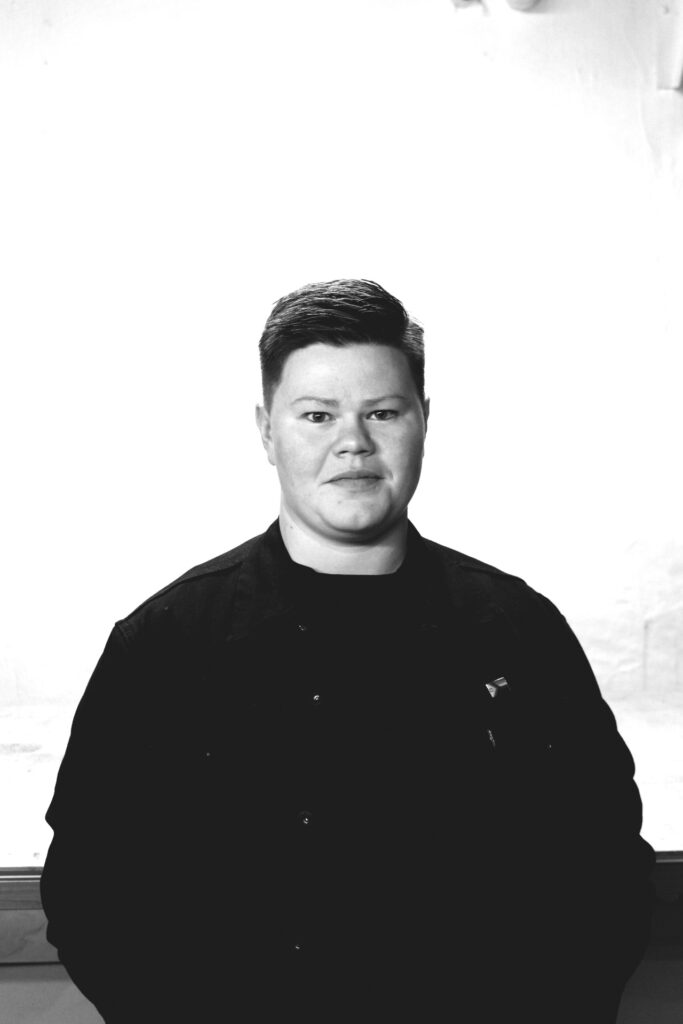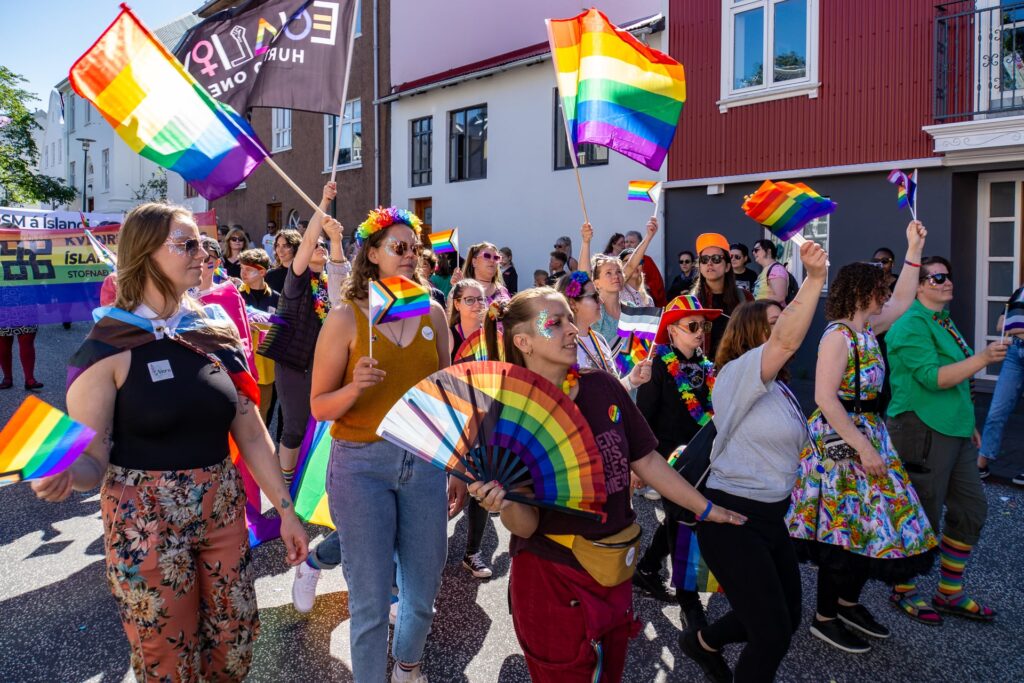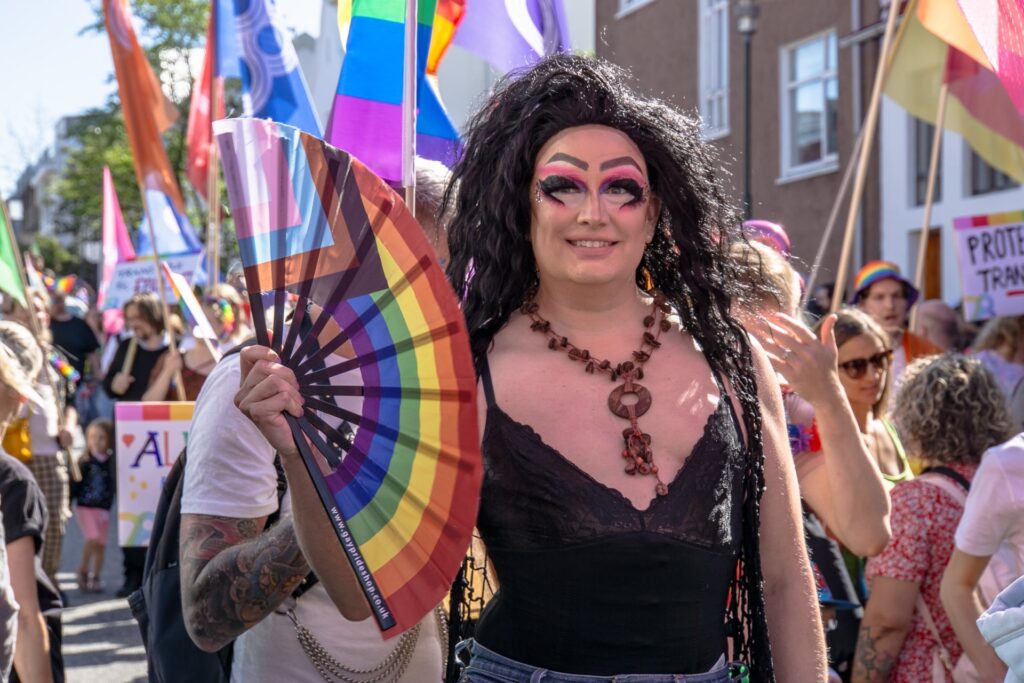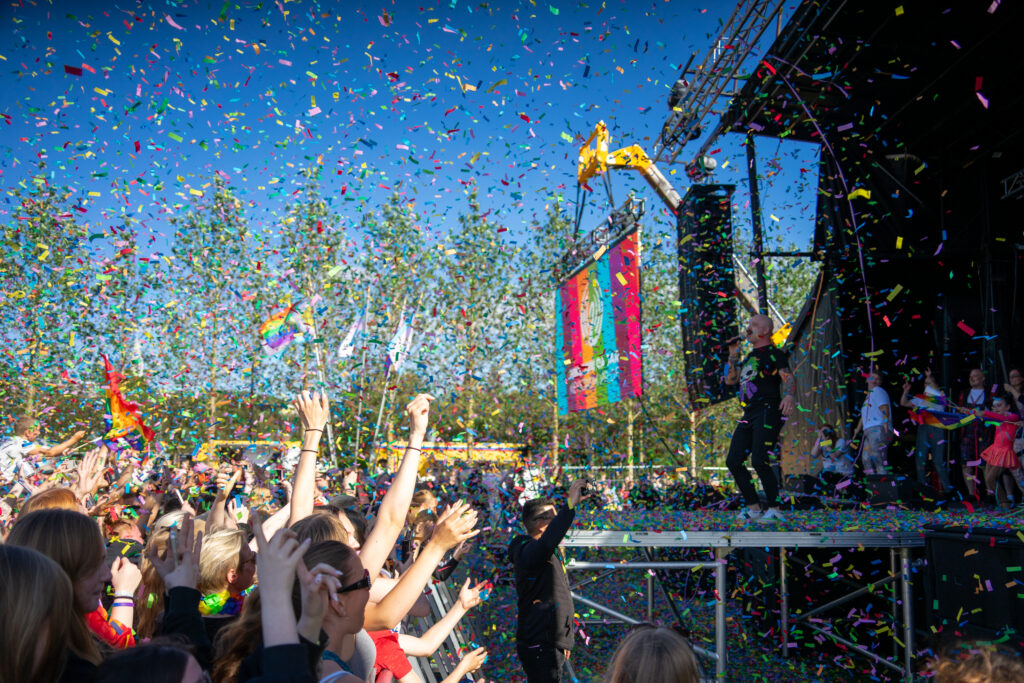This year, Reykjavík Pride marks a significant milestone: the 25th anniversary of its inception. GayIceland sat down with the president of the Reykjavík Pride Committee who promises various events, on a grander scale than before and the biggest drag show in Reykjavík.
Reykjavík Pride, a vibrant celebration of love, diversity, and inclusion, has become a cornerstone of Iceland’s cultural calendar. The Reykjavík Pride Festival, known as Hinsegin Dagar, has been a key event since the late 1990s. The festival traces its roots back to 1993, when a group of LGBTQIA+ individuals in Iceland organised a march through Reykjavík to demand an end to discrimination and to advocate for equal rights.
Over the years, this tradition persisted, and eventually, Hinsegin Dagar was officially recognised as a festival. Today, Reykjavík Pride is one of Iceland’s most celebrated events, attracting thousands of locals to its parade. The festival not only celebrates diversity and inclusion but also serves as an important time for reflection, encouraging people to learn from the past to create a fairer future for all.
This year, the festival marks a significant milestone: the 25th anniversary of its inception. Over the years, it has grown from a modest gathering into a nationwide celebration, reflecting Iceland’s commitment to LGBTQIA+ rights and visibility.
To commemorate this landmark year, GayIceland had the privilege of sitting down with Helga Haraldssdóttir, the President of the Reykjavík Pride Committee to get the low down on what to look forward to this year.
GayIceland: What is the theme this year and why did the committee choose it?
Helga: “There is a focus point this year. We wanted to focus on queer culture in all its forms whether that be queer art, theatre, history; all forms of culture.

This year’s slogan is ‘Power.’ We chose power because we wanted something powerful and impactful. Something that everyone can relate to that inspires us to keep going.
A little while ago I was doing some research into why we actually call this celebration pride. The very first one after the stonewall riots was actually called the ‘Christopher Street Liberation Day.’
Eventually the name ‘Pride’ was suggested by one of the original committee members in New York City [Craig Schoonmaker]. He later recalled how they had organised a number of events over the weekend outside of the march and wanted to give it a name. One suggestion was ‘Gay Power,’ and they eventually settled on Gay Pride. The reason they chose this was because when you look at the concept of ‘power,’ back then many people didn’t have it; even today there are still people who don’t have it. It’s possible for power to be taken away, but everyone can have pride in themselves.
I would say that this year the opening ceremony and the pride fair (the outdoor festival after the march), are going to be pretty big this year. They’re definitely on a grander scale this year. We’re not holding back.
I really like that about the queer community. For a long time people tried to shame us and take away our pride, instead we have created these celebrations and reclaimed the word to mean something important to us. That’s what we want to do with the slogan power. To encourage members of the community to see that we are incredibly strong and we should be proud of that.“
GayIceland: Is there anything new people should look out for this year?
Helga: “Well I can’t answer this question without mentioning that we have the biggest drag show in Reykjavík. I think most people who come to Pride every year would already expect this. It keeps getting bigger and better.

Another notable element of the festival is the Rainbow Conference. We have at least 10 different educational events around a wide range of different queer issues. For example Ugla Stefanía is going to be hosting a panel on ‘pinkwashing’ for political gain.
We also have a Lebanese queer journalist coming. He currently lives in Norway but a few years ago he was arrested and sent to jail for more than two years. He’s going to talk about his experience as a gay man working in journalism in an area of conflict.
So there are lots of extra events this year that people should definitely check out.“

GayIceland: This is the 25th anniversary of Pride, will there be anything special to mark the occasion?
Helga: “I would say that this year the opening ceremony and the pride fair (the outdoor festival after the march), are going to be pretty big this year. They’re definitely on a grander scale this year. We’re not holding back. Both events are going to be huge parties.“
GayIceland: Why do you think it’s still necessary to have Pride every year?

Helga: “I think it’s become more apparent in the last few years with what’s been happening around the world. Many people have noticed a backlash or resurgence of queerphobia. In times like this, celebrations like Pride are really important.
I think it also goes without saying that Pride is a time where you can really see that visibility is incredibly important. Pride is a time when people who might not yet be out can see themselves within the community but it also brings much needed visibility to many community groups.

Many people have noticed a backlash or resurgence of queerphobia. In times like this, celebrations like Pride are really important.
Pride is a time of year when Iceland’s national queer organisation “Samtökin ‘78” gets a lot of requests for counselling or education or engagement with businesses and other community groups. Pride is a time when lots of people remember that these groups exist and the important roles they play in helping to create better and safer spaces and experiences for queer people.“
GayIceland: Is there anything else you want people to know?
Helga: “Yes I would love people to check out our Pride Magazine that’s coming out at the end of July. We’re printing around 4.000 copies of it and distributing it all around the country. It’s going to be a great visual representation of the queer people of Iceland, their stories and culture.

Pride has published a magazine yearly since 2000. It’s the only magazine in Iceland that‘s printed on a regular basis that centres queer issues and queer culture. It has evolved through the years, and has become something that’s almost a thick, sturdy book [laughs]. Older editions are available on our website and the new edition will also be available there. So this is a great publication that is almost like a time capsule of queer history in Iceland.“

GayIceland: If people would like to get more involved in the organisation of Reykjavík Pride, what can they do?
Helga: “The best place to go is our website. Everything you need to know is there, or is about to be uploaded [laughs]. It has the entire program, information about the festival and you can even sign up to be a volunteer if you like.“


